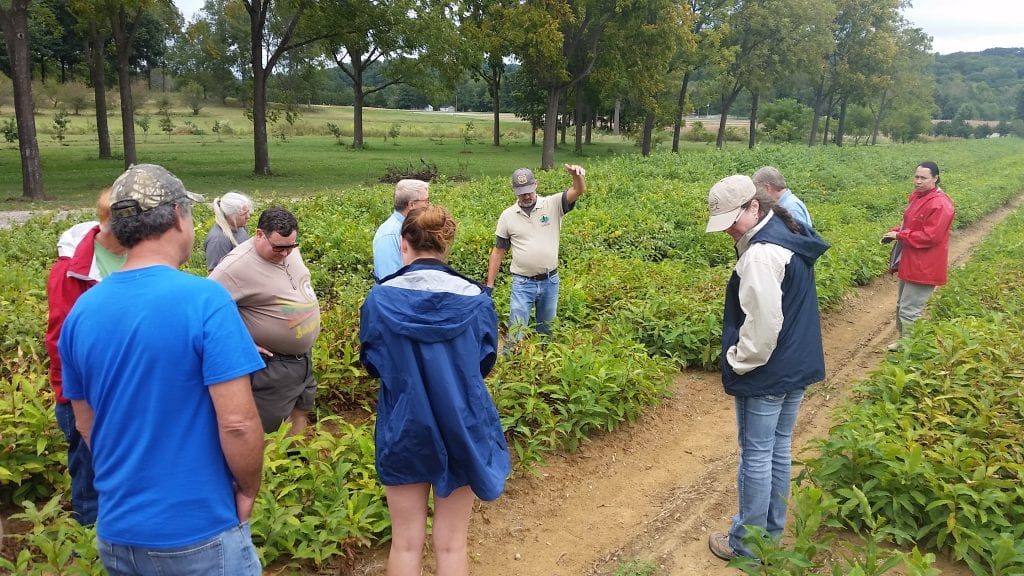The meeting was hosted by Carroll Ritter, the Sycamore Land Trust Environmental Education Coordinator, and the Southern Hills Restoration Branch. Members discussed the important of restoring the American chestnut while enjoying a tasty lunch and scenic views. They also had the opportunity to see Indiana chapter member and USFS firefighter Ron Doyle’s restored 1936 Chevy Apache with a custom, American chestnut dashboard. Doyle’s family had chestnut trees on their nearby farm, and remnants of fallen trees can still be found on the forest floor nearly 70 years later.

Indiana chapter members eating chestnut right off of a tree in the Indiana Department of Natural Resource’s Vallonia Nursery. Photo by Ben Finegan.
The group then toured the nearby Indiana Department of Natural Resource’s Vallonia Nursery. One of the best nurseries east of the Mississippi, the sandy soils of Vallonia grow tens of thousands of TACF Restoration Chestnuts 1.0. Indiana chapter member Jim McKenna led the tour, and discussed the recent pruning improvements to “tame” the rampant growth of the seedlings into more manageable sizes.

Participants from the Indiana chapter fall meeting visiting the breeding orchard in Jackson-Washington State Forest. Photo by Stephanie Eft.
After the nursery, the tour went back up into a portion of the Jackson-Washington State Forest to visit one of Indiana’s breeding orchards and a BC3F3 progeny test. The breeding orchard holds promising specimens with good form that maintain blight resistance several years after inoculation. While eating raw chestnuts off the trees, the group was treated to a rare find: a large Imperial Moth caterpillar nestled among the chestnut leaves!

Jim McKenna explains the height that Restoration 1.0 Chestnut trees would grow to without the twice a year pruning. Photo by Ben Finegan.
While examining the leftovers of eight-foot tall Johnson grass and vines, the group commiserated over war stories of the recent progeny tests. The first half of the summer saw 20 inches of rain in a little more than a month, while the second half saw a near drought. All-in-all, the trees were well cared for and are in a great place to start the 2016 growing season.
The day concluded with a drive just down the road to Salem High School. Greg McCurdy and two science club students gave our group a tour of their 60-acre outdoor science lab which includes planting of nearly 100 American and hybrid chestnut trees.

